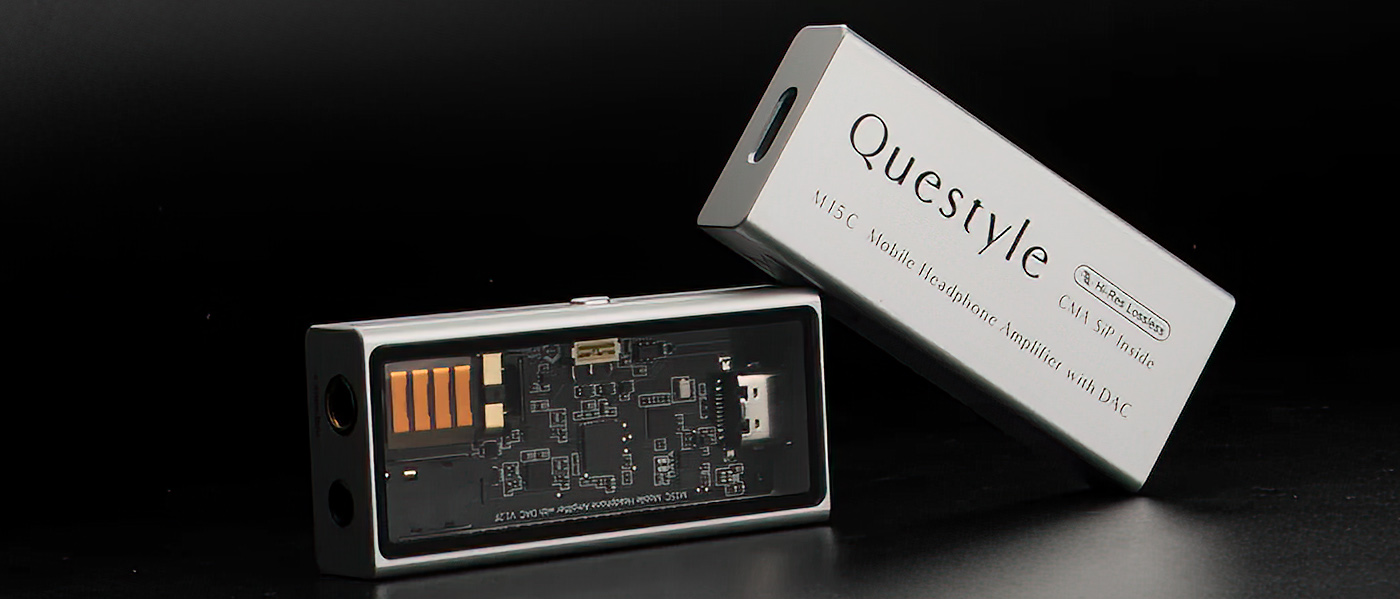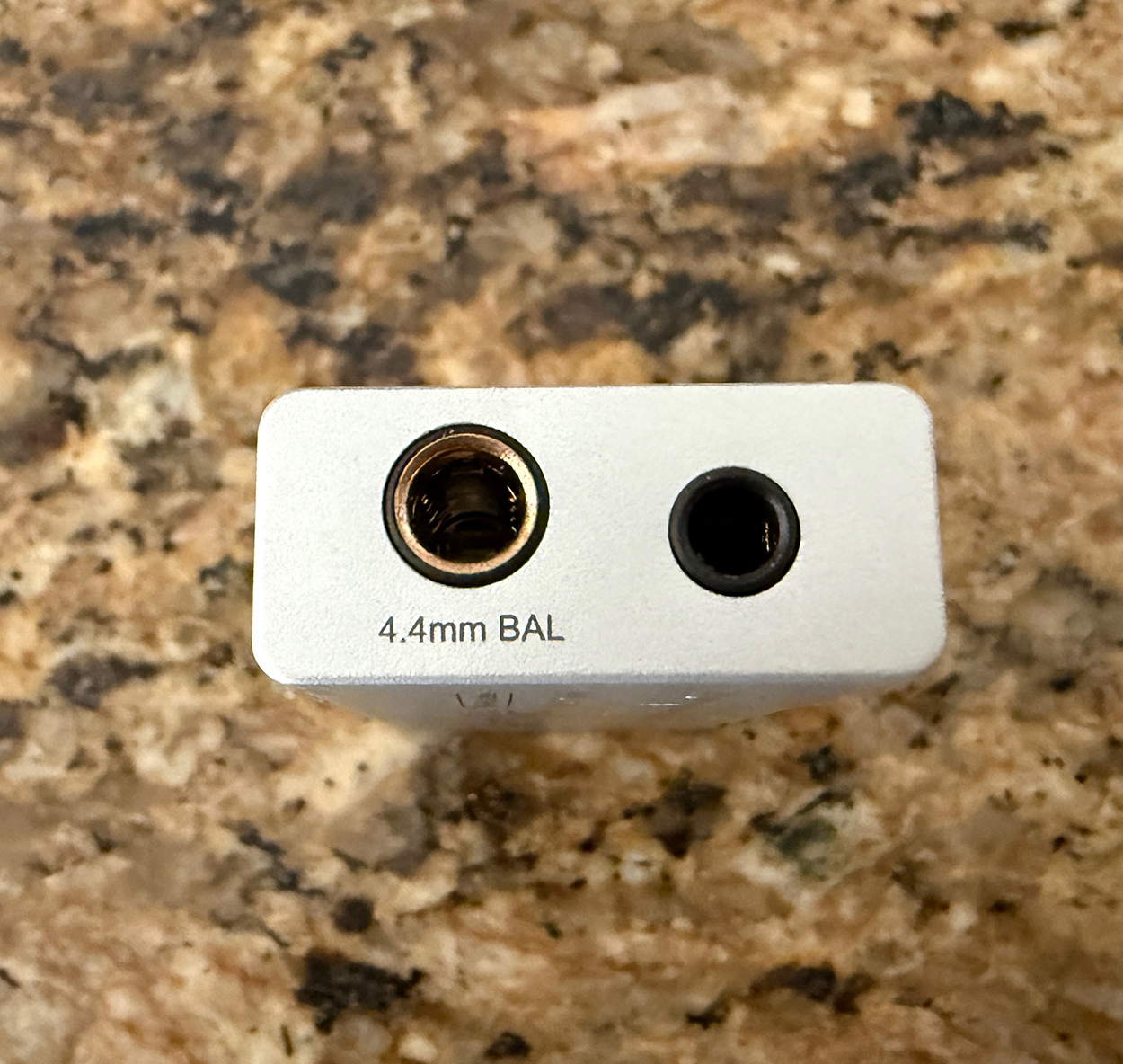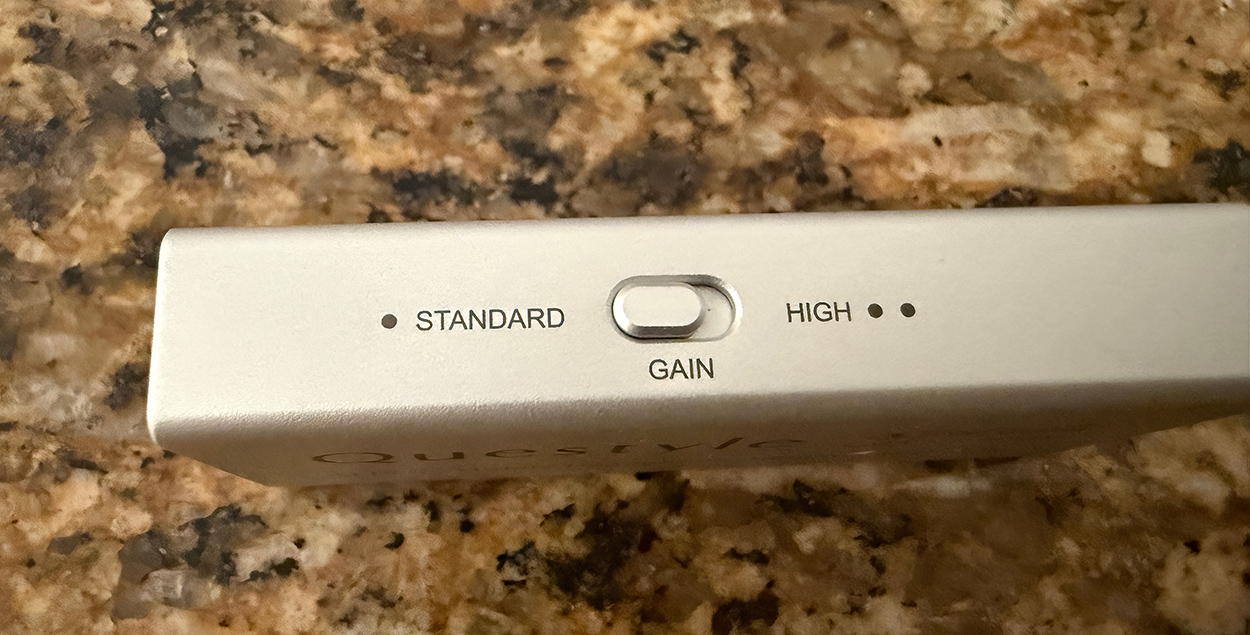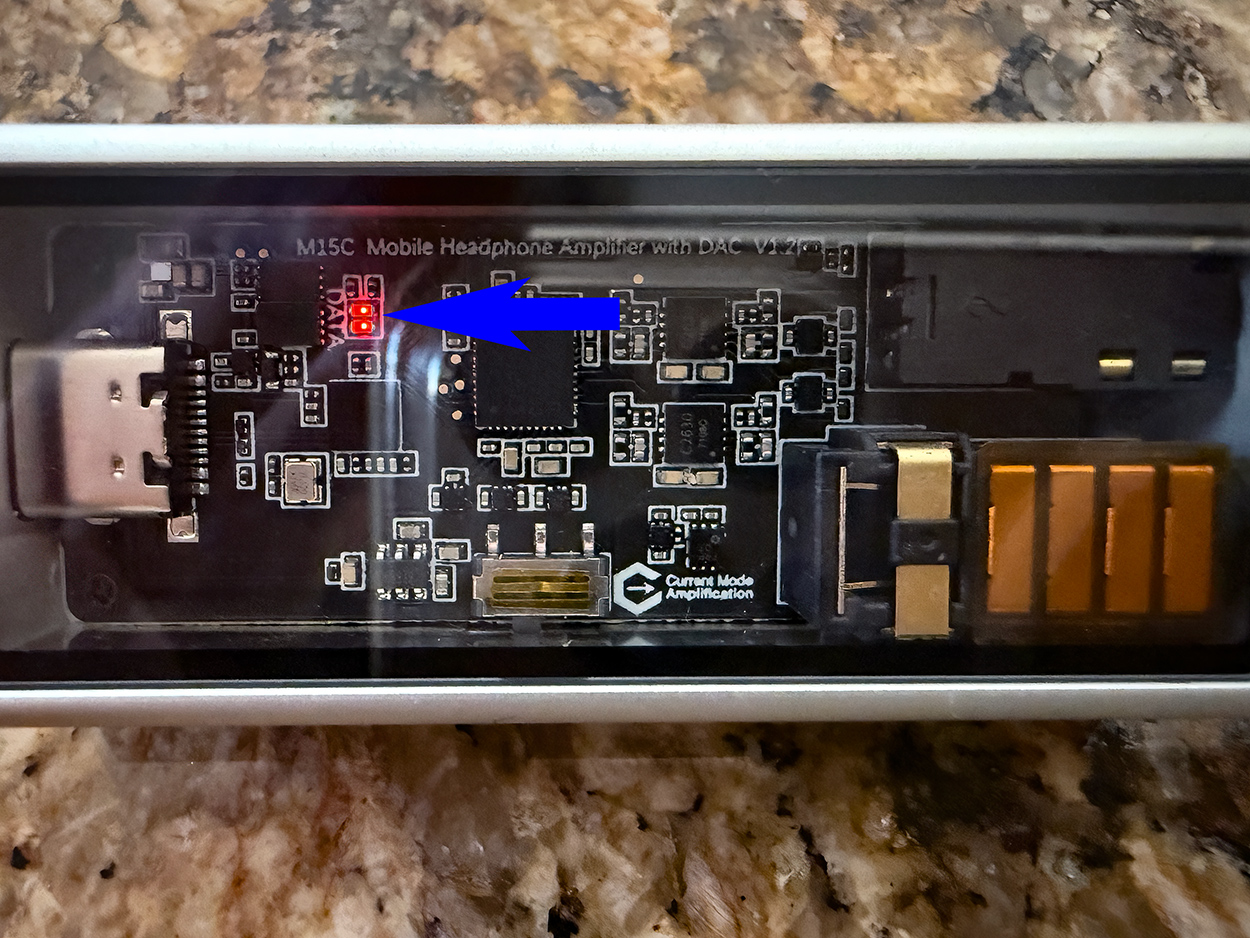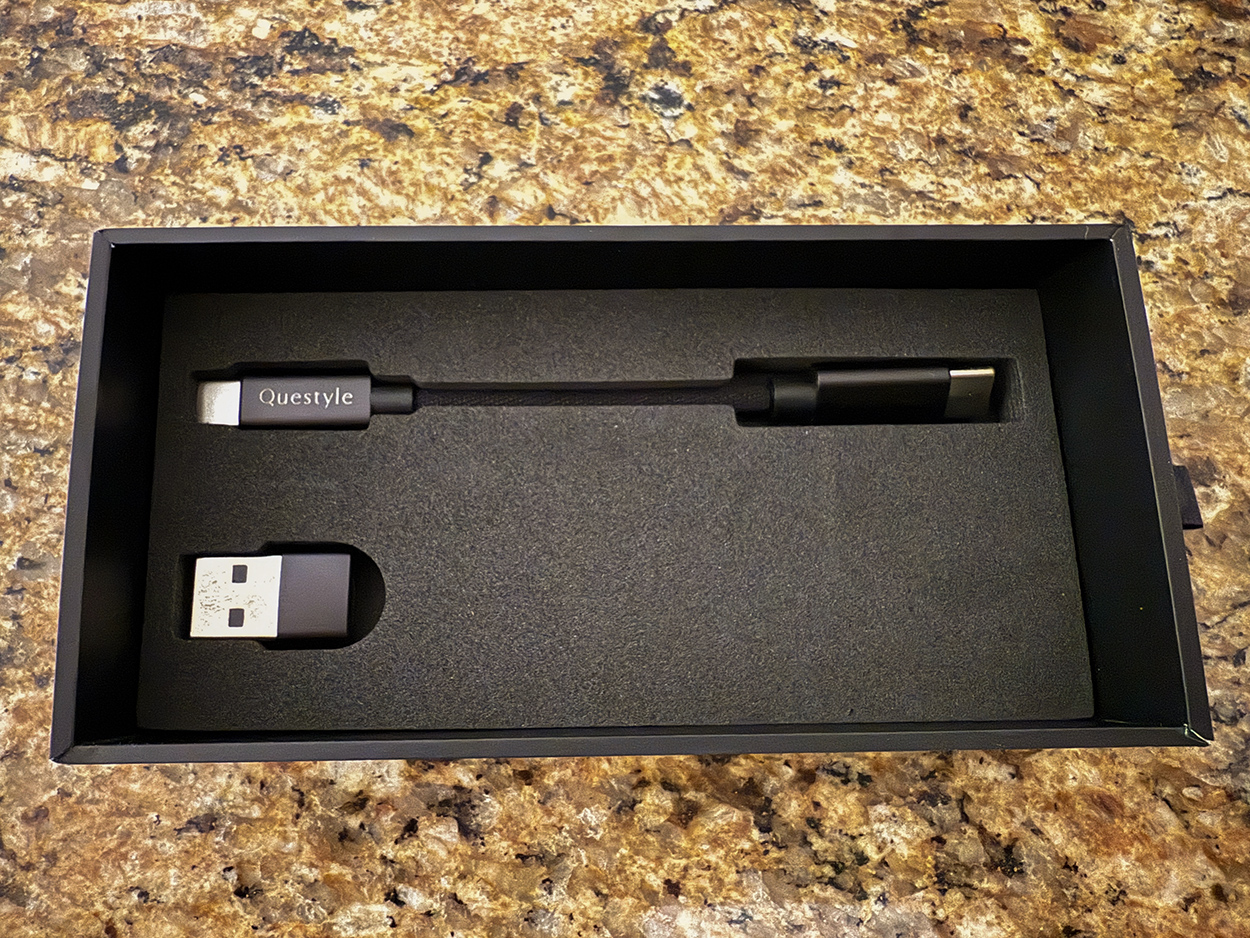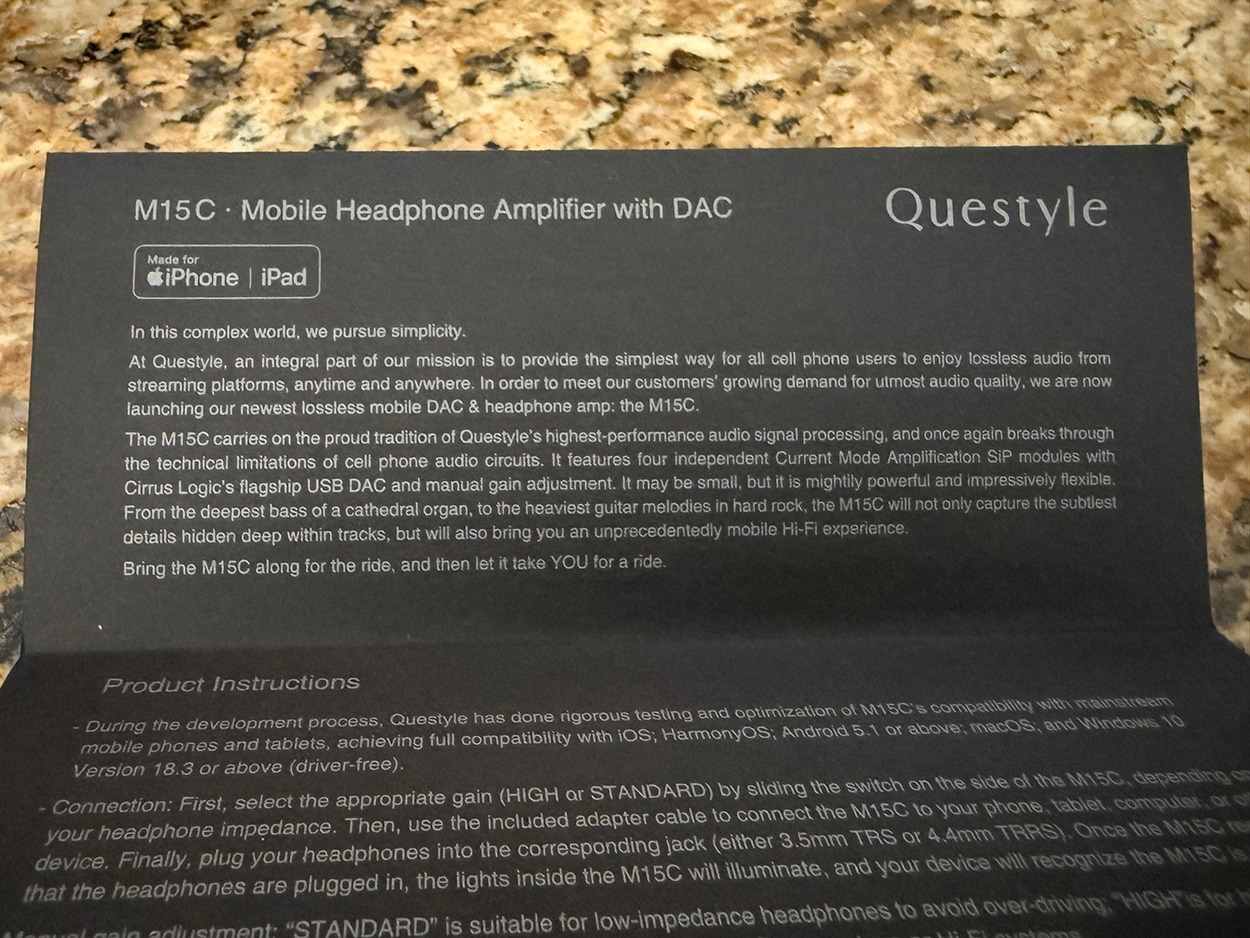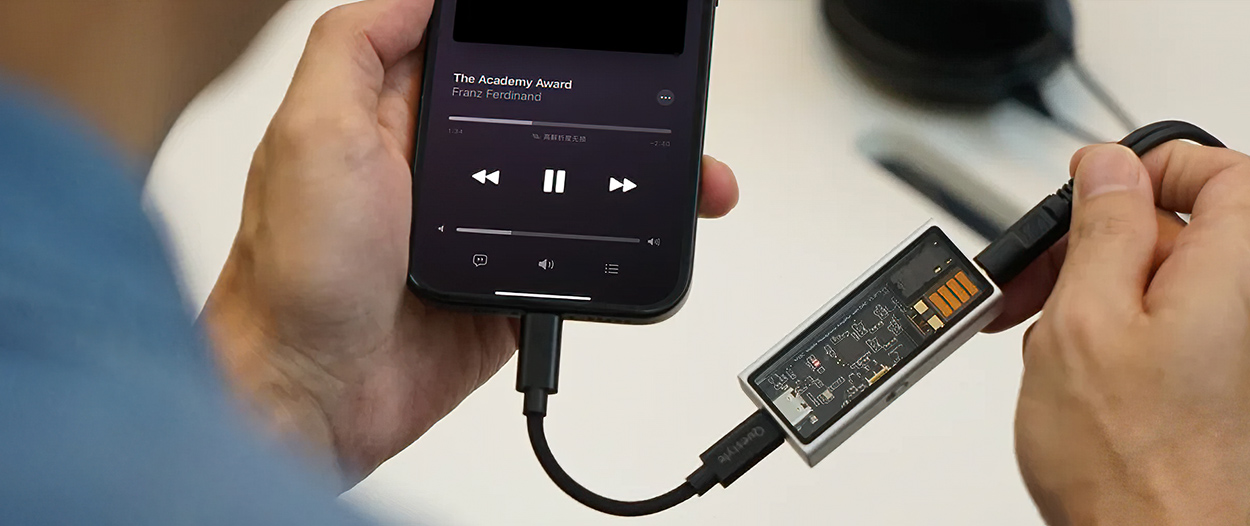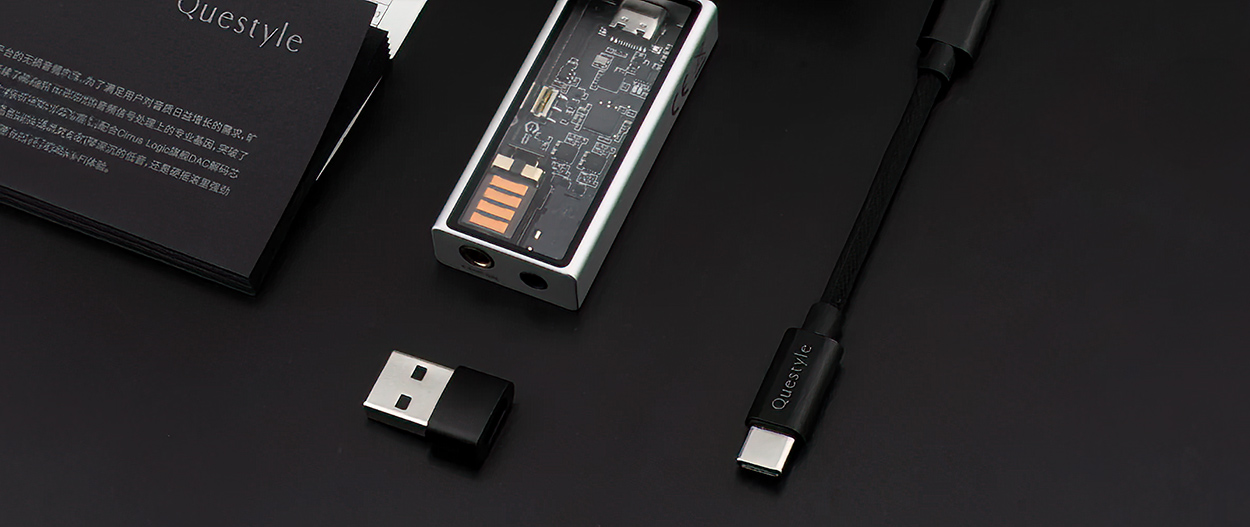Or at least, it used to be.
Smartphones, especially, are losing their headphone outputs. That’s a blessing, really, as most computer and smartphone headphone outputs are cheap afterthoughts and don’t exactly sound very good.
But Questyle has a great and inexpensive solution in the M15C DAC. It’s smaller than a matchbox, has excellent specs, and will let your music come alive.
The M15C packs some nice features in a small space. It has the power to drive almost any headphones, and it offers balanced and single-ended outputs. At around $99.00, you can’t beat it.
Questyle M15C Mobile Headphone Amp
- Small and easy to carry.
- The clear window to the circuit board is attractive, and LEDs can tell you when you are listening to high-resolution music.
- Lets you listen with balanced or unbalanced headphones.
- A 2-position gain control helps you match the DAC to your headphones.
- Supports PCM decoding up to 384 kHz (32-bit) and DSD formats up to DSD256.
- The sound was tilted a bit to the ‘warm’ side, which I liked.
- It’s pop and click free, and I heard no noise.
- The included manual is an eye test.
- Should have a carrying case included.
- Firmware updates are offered, but only through a Windows computer.
Questyle began its corporate life in 2012 in Shenzhen, China, focusing on the research and development of high-tech lossless audio products and introducing the independent brand of “Questyle”. The company says its “mission is to help users solve technical problems, be free from restricted surroundings, offering an immersive audio experience in a simple way.”
The M15C certainly accomplishes that. It’s pretty much a plug-and-play device that will get your headphones up and running as you travel, lounge at home, or work in the office. It will free you up and after a while the little dongle becomes invisible to you.
As a frequent traveler, I have found the M15C a pleasure to use, and since it needs no internal power or recharging it’s really a low friction device.
Compatible operating systems:
Android 5.1 and above, Windows 10 18.3 and above, iOS (support via Lightning with LTC02 adapter), macOS
Decoding:
PCM: 44.1 kHz – 384 kHz (16/24/32 bit), DSD: DSD64 (1, bit 2.8 MHz), DSD128 (1 bit 5.6 MHz), DSD256 (1 bit 11.2 MHz)
Output connectors:
3.5mm (unbalanced), 4.4mm (balanced)
Output power:
3.5mm: RL=300Ω, Po=10.72mW, Peak Voltage 5.068V, THD+N=0.00032%
4.4mm: RL=300Ω, Po=42.79mW, Peak Voltage 10.13V, THD+N=0.00028%
Frequency range:
±0.1 dB (20 Hz – 20 kHz) ±1 dB (20 Hz – 80 kHz), THD+N: 0.00028%
DAC:
Cirrus Logic CS43198 DAC
Case Material:
Aluminum alloy with anodizing (CNC)
Color:
Silver
Dimensions:
61.9mm (length) x 27.9mm (width) x 12mm (thickness)
MSRP:
$129.00
Website:
Company:
SECRETS Tags:
Questyle M15C, portable DAC, headphones, balanced audio
Secrets Sponsor
As you can see, this is a very compact device, made of aluminum with a neat little window that will let you see the circuit board and an indicator light letting you know the power is on and if you are listening to high-resolution music. OS compatibility includes Android (5.1 and higher), Windows (10.18.3 or higher), iOS (however, devices with Lightning jacks will need an adapter), and Mac OS.
The DAC chosen for this device is a Cirrus Logic CS43198. It’s well thought of, and its analog section has a slightly warm, almost tube-like sound.
The M15C has 2 outputs at the short end of the device, one for balanced headphones and the other for the more popular unbalanced designs. There is no power switch, as plugging it in turns it on. Power and the digital signal enter from a USB-C port opposite the headphone jacks.
The only other control is a 2-position gain switch that raises the volume slightly, but audibly, to help you drive a wider variety of headphones.
A red LED indicates that the power is on. If you are playing high-resolution music, another LED lights up, but it’s so close to the first LED that I didn’t notice it at first. It would be nice if the colors changed to make it more obvious.
The M15C is nicely packed in a cardboard box, and under the device is a short USB-C cable and an adapter if you are plugging into an older USB-A style port.
There’s an instruction manual, but I have to add that it is very hard for these old eyes to read, with gray ink on a black background.
There’s not much to do to get the M15C up and running. Choose your device and plug it in via USB-C. On the other end, plug your favorite headphones in, either balanced or unbalanced. In my case, I used my favorite Focal Clear MG cans with an unbalanced 3.5mm plug.
For music, I used an iPhone 16, and also plugged the M15C into a MacBook Pro. Using the Mac, you have to go to the audio panel and choose the Questyle, but it showed up as a possible audio destination with no fiddling. On the iPhone, it is plug and go.
On the iPhone, I listened through the Music app provided by Apple. It passes high-resolution files. I also listened to the Roon ARC app, which gave me access to my Roon server wirelessly on the phone. It also passes high-resolution files.
I always set the gain control to standard. On anything I listened to, setting the control to high offered no audible advantage. It was just louder.
In general, here are my thoughts on listening to music through the M15C. First, it was a clean delivery of the music with no interruptions. No background noise, pops, or clicks.
Some DACS make a thumping sound when the audio changes resolutions, say from 44/16 to 192/24, but the M15C remains quiet, which is a real plus.
I thought the sound from the MC15C was excellent, leaning slightly warm in the mid-range. That’s good for vocals and acoustic instruments, and I thought massed instruments in a symphony also sounded good. The highs were natural and did not strain. The bass was deep when it needed to be. Now, of course, the source material had to be good to get these results, and the Focal headphones are also exemplary. While I have heard DACS or even analog headphones amps that do detract from the sound, the MC15C was not one of them. It sounded very good and put up no red flags during listening. Of course, a really high-end DAC could offer a flatter frequency response and more extended highs or perhaps deeper bass, but I found music very listenable through the M15C, and there were no deficiencies in this little DAC that took me away from the performances.
Some of the things I enjoyed on the M15C:
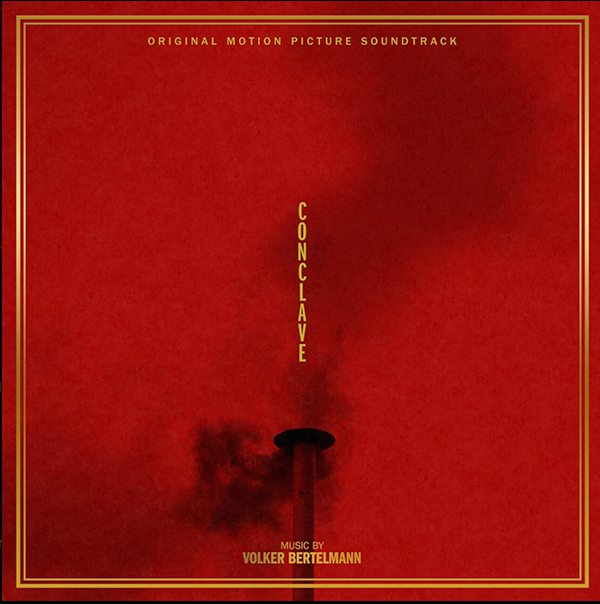
Volker Bertelmann, “Conclave (Original Motion Picture Soundtrack)”
Conclave- Original Soundtrack – This is a dramatic piece of music for a compelling film. There’s deep bass, electronics, chorus – a bit of everything. This is a great recording. I heard it as a 48/24 FLAC from Tidal. Sadly, there’s no CD release, but there is a vinyl version.

Hugo Montenegro and His Orchestra, “Hurry Sundown (Original Film Soundtrack)”
Hurry Sundown – Original Soundtrack – A Hugo Montenegro score, which is wonderful, even though the movie was crummy. Great separation, great-sounding acoustic jazz, and a talented chorus. Don’t sit through the awful movie but do listen to the music on CD or streaming.

BBC Philharmonic Orchestra and John Wilson, “Copland: Orchestral Works, Vol. 1 – Ballets”
Copland Orchestra Works Vol. 1 – The BBC Philharmonic with John Wilson plays these familiar tunes by American master Aaron Copland. Most are great audio demo material, and the M15C was an illuminating listen. The 96/24 FLAC file went deep on the “Fanfare for the Common Man”, and the strings were lovely on “Appalachian Spring”.
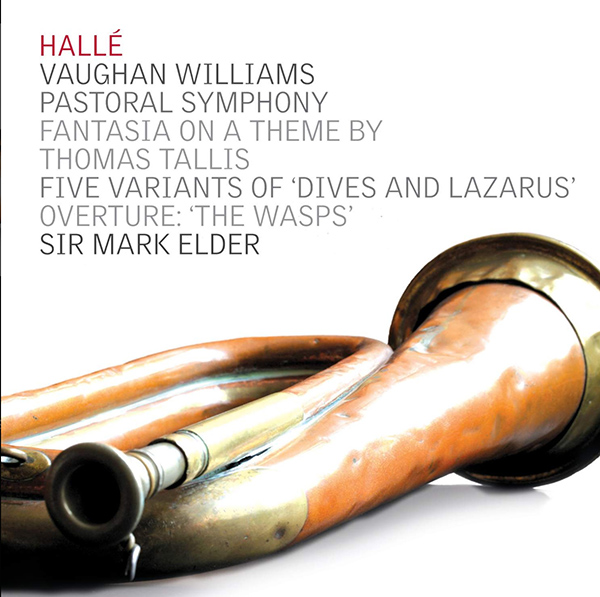
Mark Elder and The Hallé, “Vaughan Williams: Pastoral Symphony”
Vaughan Williams – Pastoral Symphony with the Hallé Orchestra – This album is a series of great Vaughan William performances and is hard to beat. I listened to the 96/24 FLAC files, and the music through my little iPhone, augmented by the M15C and the Focal headphones sounded wonderful.
Secrets Sponsor
As I’ve said throughout the review, the Questyle MC15C is a high-value, low-cost accessory if you are a headphone user. It bypasses the usually subpar circuitry that passes for a headphone output in most digital devices and provides a really good quality digital-to-analog conversion at a very competitive price. It supports just about every high-resolution format you could want, even up to DSD256. Everyone should have an M15C if they want music on the go.
- Well built, won’t fall apart.
- Smooth sound.
- Easy setup.
- It should work with any cellular phone with a USB port.
- Easy to use with a Mac or Windows computer.
- It should come with some kind of case. Questyle offers some in their store, but they cost extra.
- The instructions are hard to read. I could not find a PDF version on the Questyle website.
- Firmware updates can only be done on Windows-based computers. Adding Mac firmware update functionality would be appreciated.
A lot of high-quality sound for not a lot of money. Over the years, I’ve heard a lot of DACS that offer similar features. Most were more expensive; none surpassed the sound and ease of use on offer here. Having balanced and unbalanced ports is a plus. There always seemed plenty of power, and I tried a variety of headphones with the M15C, including HIFIMAN, Sennheiser and Grado.
Like all modern devices, firmware updates will be offered. Note that you can only update on a Windows based computer, a definite negative for the large percentage of potential customers who are in the Apple universe. I should also note that out of the box, the M15C worked fine with all my Apple products including an iPhone, iPad and Mac laptop.



